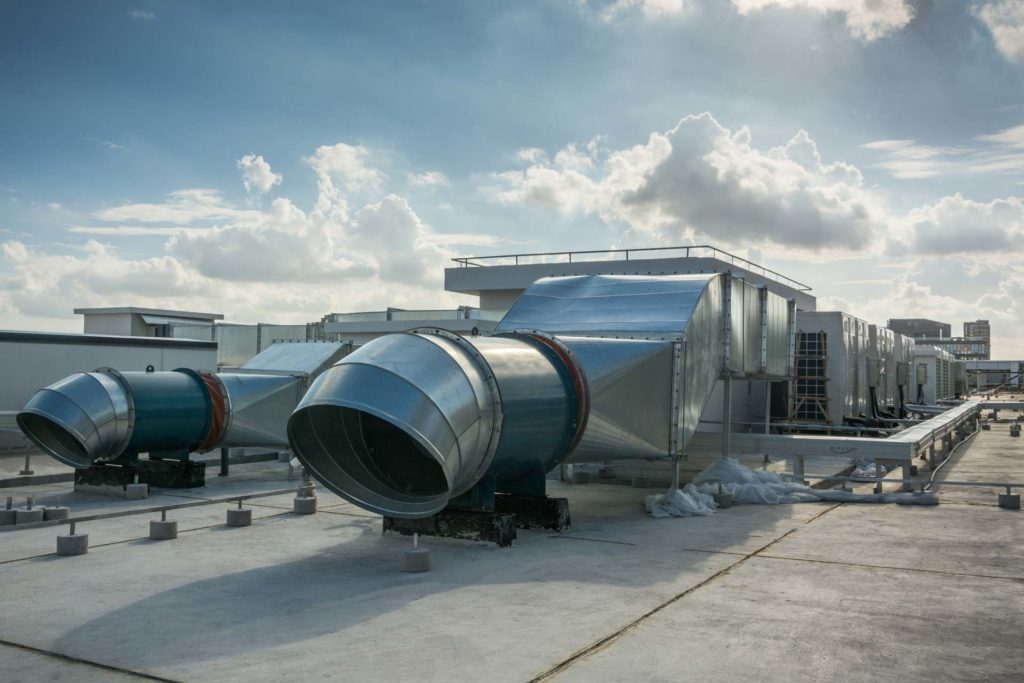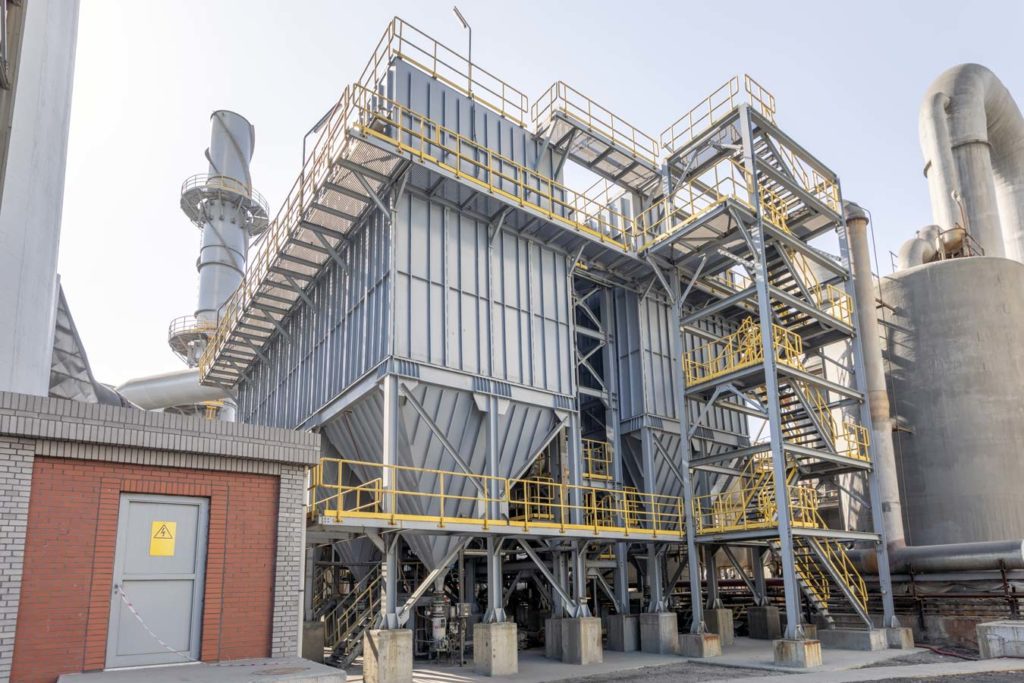originally published November 2021 – updated July 2025
An industrial fan is a high-powered machine designed to move large volumes of air or gas through a system. These fans are critical for ventilation, dust collection, combustion, and process cooling in demanding industrial environments.
Unlike household fans, industrial models are built for durability, energy efficiency, and continuous operation under extreme conditions. They come in different types, most commonly centrifugal and axial, each suited to specific applications.
In this post, we’ll break down how industrial fans work, where they’re used, and how to determine which type is right for your operation.
What Is an Industrial Fan?
Industrial fans are heavy-duty machines designed to continuously move high volumes of air or gas, even in harsh conditions.
These systems are designed with durable components, including ball or roller bearings, cast aluminum blades, stainless steel housings, and continuous welds, which withstand long operating hours and high-stress environments.
You’ll find industrial fans in nearly every industry, from manufacturing to agriculture, because airflow plays a direct role in worker safety, process control, and regulatory compliance. They help ventilate confined spaces, remove contaminants, and maintain a stable environment for sensitive equipment.
Fan sizing and selection depend on the system’s airflow requirements and its classification by the Air Movement and Control Association (AMCA), which provides guidelines on performance standards, efficiency, and application-specific design.
How Industrial Fans Solve Real Operational Problems
While many industries rely on industrial fans, it’s how they’re applied in the field that makes the difference. These examples go beyond general categories—they highlight the specific problems fans are built to solve in real environments. From safety and ventilation to heat resistance and space constraints, the right fan is crucial for maintaining efficient, compliant, and protected operations.
Combating Explosive Vapors in Automotive Shops
In automotive manufacturing and repair, workers are often exposed to flammable vapors from paints, solvents, and fuels. Safety standards introduced in 2003 require proper ventilation in these high-risk environments.
That’s why automotive fan systems must be explosion-resistant, easy to maintain, and highly reliable. They’re designed to operate safely in hazardous locations and reduce the buildup of airborne contaminants before they reach dangerous levels.
Withstanding Harsh Elements in Oil & Gas Sites
At oil fields, refineries, and processing plants, fan systems are exposed to extreme heat, corrosion, moisture, and abrasion. Off-the-shelf equipment doesn’t last long in these conditions.
Fans built for the oil and gas industry are engineered with welded flanges, abrasion-resistant materials, and protective coatings. These features help ensure continuous airflow despite exposure to harsh elements and reduce costly system failures.
Maximizing Airflow Without Losing Gym Floor Space
In gymnasiums and fitness centers, maintaining airflow is essential for both comfort and odor control. But bulky floor units aren’t practical in high-traffic areas or near workout equipment.
Wall-mounted industrial fans offer a smart solution, circulating air while preserving valuable floor space. Most gyms benefit from installing multiple smaller-volume units to create even coverage and avoid hot spots or stale zones.
Managing Heat and Dust in Power Plants
Power generation facilities rely on industrial fans for combustion support, heat control, and dust management — often in environments with elevated temperatures and particle-laden air.
To meet the demand, fans are designed with self-cleaning impellers, high-temperature bearings, and heat-resistant coatings. Without them, systems risk overheating, emission violations, or unexpected shutdowns.
What Are the Benefits of Industrial Fans?
Industrial fans enhance performance, reduce energy consumption, and contribute to a safer work environment. Key benefits include:
- Improved temperature control through destratification and air circulation year-round
- Lower utility costs by reducing HVAC load and improving system efficiency
- Evaporative cooling that can lower perceived temperatures by up to 10°F in summer
- Energy efficiency from high-performance fan designs like radial tip and backward-inclined models
- Better air quality and comfort for workers in demanding environments
- Reliable performance in large, high-ceiling, or difficult-to-condition spaces
Together, these benefits make industrial fans a wise investment for any facility that depends on consistent airflow, temperature control, or regulatory compliance.
If you’re evaluating options for your operation, we can help you select a solution built for your environment and budget.
Ready to Find the Right Industrial Fan for Your Business?
With over 20 years of hands-on experience, Baghouse America delivers industrial fan systems that perform under pressure — no proprietary markups, no guesswork, just real solutions.
We’ll evaluate your airflow needs, application requirements, and operating conditions to match you with a system that saves money and gets the job done.
Contact us today to request a quote or speak with one of our experts about the potential fan options for your company.

